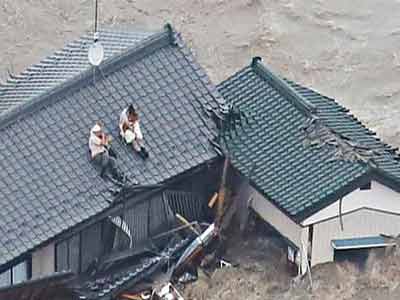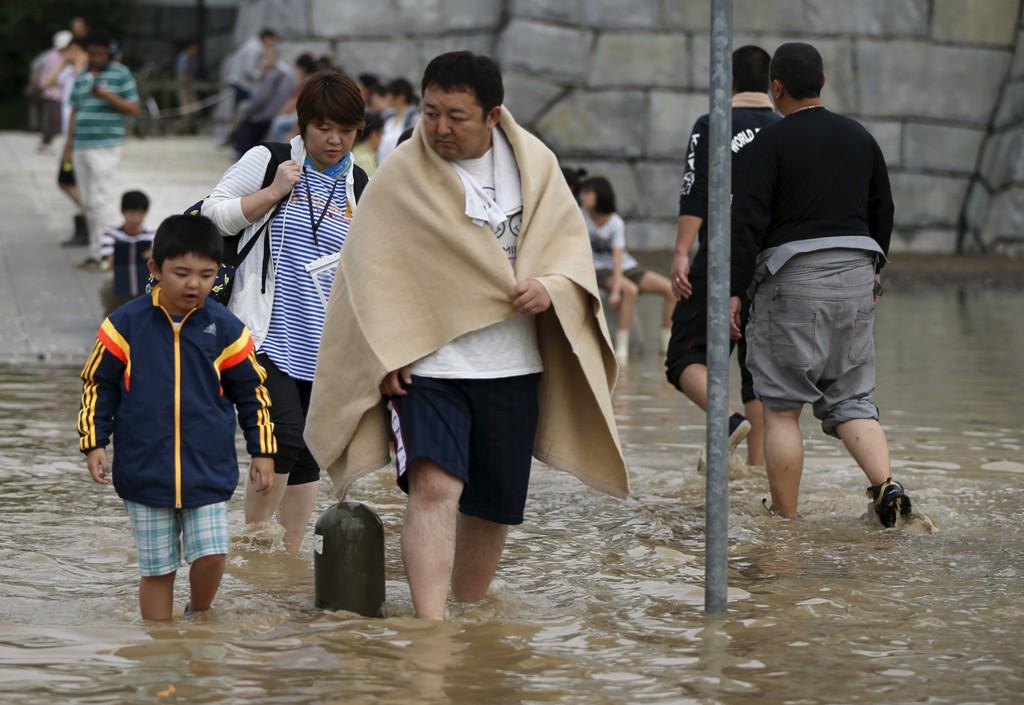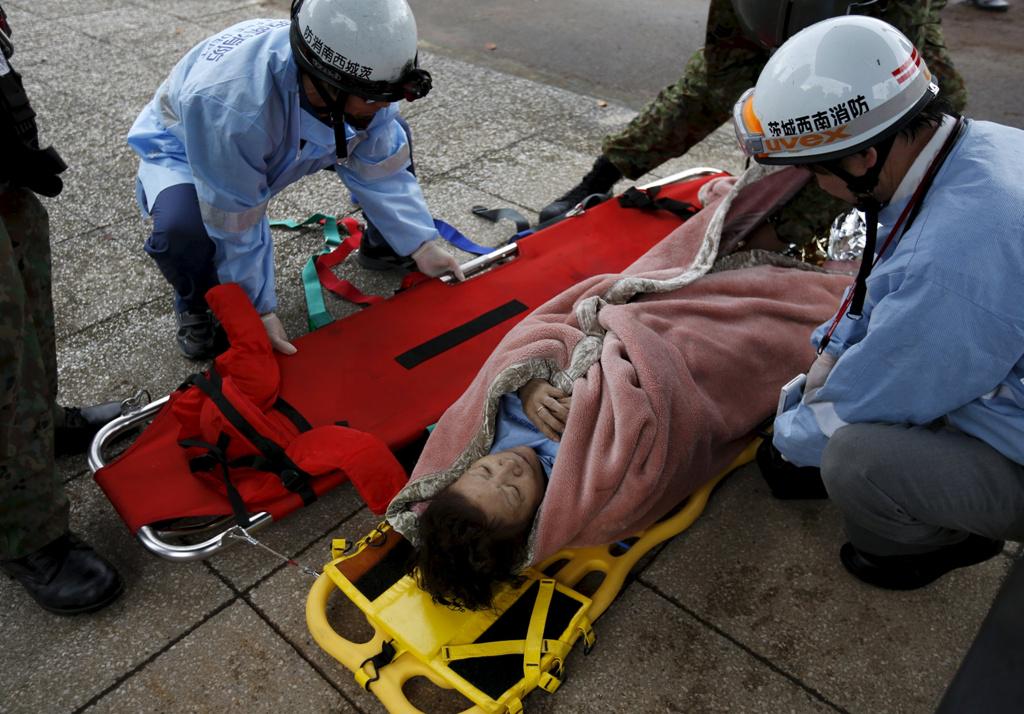

WIDESPREAD flooding and landslides in north-east Japan have forced more than 90,000 people to abandon their homes. A wall of water hit the city of Joso, north of the capital, Tokyo, after the Kinugawa River burst its banks.
Helicopter rescue teams have been plucking people from rooftops. At least eight people are still missing and 100 need rescuing. The rains come a day after a tropical storm brought winds of up to 125km/h (78mph) to central Aichi prefecture.

The chief forecaster at the Japan Meteorological Agency (JMA), Takuya Deshimaru, said that the rainfall was “unprecedented” for that part of Japan. “We can say this is an abnormal situation and there is imminent serious danger,” he went on.
The hardest-hit areas have been Ibaraki and Tochigi prefectures. Japan’s Meteorological Agency had put both regions on its highest level of alert. Saori Mori, who lives close to the Tone River in the town of Abiko, told the BBC “the water is right up to the top of the banks now”. “We have been told to pack and prepare to evacuate as soon as we are told to,” Ms Mori said, adding that she and her family were “getting ready for a fast exit”. Japan gets hit by, on average, 20 to 30 such storms each year.
This is the 18th this year so despite the heavy rainfall that we have experienced over the last few days, it was difficult to predict how severe the damage would be.
The Kinugawa River bursting its banks took even experts by surprise, especially because of the widespread areas that it has affected. Just as in previous natural disasters, including the 2011 earthquake and tsunami, Japan’s non-combat military Self-Defence Force is playing a major role in the rescue operations and it is receiving lots of praise so far.
But there are concerns that these storms are getting stronger in recent years and more preparations may be needed in the future. Television footage from Joso in Ibaraki showed people clinging to the rooftops before helicopter rescue teams winched them to safety.
Entire homes and cars were carried away on the torrent as the Kinugawa River burst its banks after two days of heavy rainfall. The flood waters reached as far as 8km (5 miles) from the breach.
In Tochigi, more than 500mm (19 inches) of rain fell in 24 hours in places, double the amount that normally falls there throughout the whole of September, according to Japanese public broadcaster NHK.
Parts of central Tochigi have seen almost 600mm of rain since Monday evening, breaking records. Many other areas of eastern and north-eastern Japan have also been issued weather warnings, including Fukushima prefecture, home to the still-damaged nuclear plant hit in 2011’s earthquake and tsunami.
The downpour overwhelmed the site’s drainage pumps, a spokesman for operator Tokyo Electric Power (Tepco) said. Huge volumes of water, used to cool the plant’s crippled reactors, are being stored at the site.
No comments:
Post a Comment